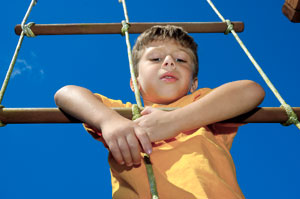 Each year, more parents report that their children suffer from recurrent headaches. Diagnosis and treatment can both pose complications for health-care providers.
Each year, more parents report that their children suffer from recurrent headaches. Diagnosis and treatment can both pose complications for health-care providers.
Some suspect that a portion of these pediatric headaches may be cervicogenic headache, which result from damage in the upper spine and the muscles in the neck, shoulders, and upper back. But little data is known about the cervical spine functions in pediatric patients with headache symptoms.
A new study sought to change this lack of information. Researchers physically examined the cervical spine functions of children between 6 and 12 years old with suspected cervicogenic headache, in addition to age-matched asymptomatic children, who served as a control group. The physical examinations included evaluation of the patients' range of motion while active. Their upper cervical range of motion was determined using a flexion-rotation test, and the degree of pain caused by the movements in the test was also recorded. In addition, the participants were observed for head posture, and the carniovertebral angle was measured for each child.
The study revealed that the children with headache had a significantly smaller craniovertebral angle, less active range of motion, and less range of motion during the flexion-rotation test, especially on the dominant side of the neck that headaches originated, than the healthy controls. The participants' pain intensity score during the flexion-rotation test was far higher for the symptomatic group than the control group as well.
The study authors determined that their study provided evidence of impaired function of the upper cervical spine in children with cervicogenic headache. They suggested that health-care providers utilize the flexion-rotation test when examining children with this type of headache.
Previous research has found that a treatment plan including both chiropractic spinal adjustments and exercise is effective and safe for treating cervicogenic headache without pain medications. These options may be especially beneficial to parents who want to help their children with their pain but also want to avoid the side effects of drugs.
Reference
Budelmann K, von Piekartz H, Hall T. Is there a difference in head posture and cervical spine movement in children with and without pediatric headache? European Journal of Pediatrics 2013 May 26. [Epub ahead of print].